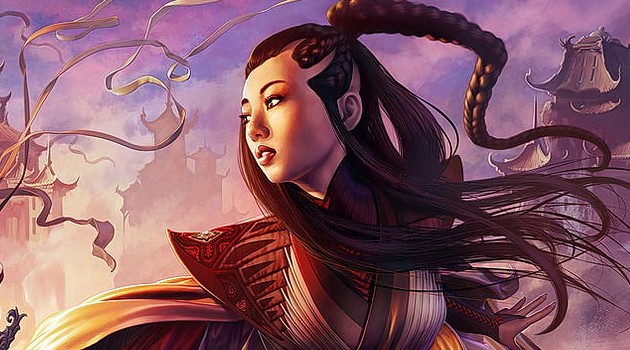I am here today to defend one of my favourite decks in Standard: Boss Sligh. Mono Red decks like Boss Sligh tend to get a bad reputation for being budget lists for those without other options. Just because a deck is cheap, however, doesn't mean that it can't be skill testing and competitive. Just remember:
Anybody can win with Siege Rhino, but it takes a master to win with red draft cards.
There are Two Types of Decks
In order to better understand Boss Sligh and where it fits in to standard, we must first zoom out and understand how decks interact on a macro level. On said macro level, there are only two types of decks in Magic: those that want to kill you with cards in your hand, and those that want to kill you with no cards in your hand.
A good example of a deck that aims to kill you with cards in your hand is the modern Affinity deck. Affinity is a deck with a very low curve that aims to simply play more spells at a faster rate than you can keep up with. With free creatures such as Ornithopter and cheap payoff cards like Arcbound Ravager, Affinity's ideal start is to dump its entire hand on the table and win fast. The central premise of Affinity -- and aggro decks like it -- is to play more cards than you and kill before you can catch up.
A recent example of a deck that aims to kill you without cards in your hand is the Sphinx's Revelation control decks from the previous standard format. These decks were extremely slow for which actually winning the game seemed incidental. By repeatedly casting their hallmark card, Sphinx's Revelation decks would simply trade 1-for-1 until you ran out of cards and they had plenty left over. These types of slow control decks exist to trade punches until you eventually have no more resources.
In case you have not already guessed, Boss Sligh falls firmly in to the first camp.
Prioritizing One Drops
Once we understand that Boss Sligh wants to kill your opponent with cards in their hand, it becomes obvious that we want to find the quickest road to victory. In order to do that, planning ahead becomes key as we rapidly play out our hand Affinity style.
With nineteen one-drop creatures in the deck, deciding on mulligans and which to play first becomes one of the major decision points with this deck. The way to evaluate your draws and potential openings comes down to various "levels" of thinking.
The first level of evaluating this choice comes in terms of how much damage you can do. When looking at your opening draw, your first thought should be to how much damage you can do by turn three. As you think this through, you should be prioritizing not the one drops
that do the most damage on their own but the ones that will result in the most damage overall. For example, your hand with two Monastery Swiftspear and a Foundry Street Denizen should lead off on the Foundry Street Denizen. While Monastery Swiftspear does more damage on turn one, the Foundry Street Denizen play turn one results in a much larger turn two swing. While this is a fairly simple example, it demonstrates that you do need to plan ahead.
While planning out your own turns is important in how you prioritize your one drops, your opponent's deck does still factor in. One of the biggest spells that can punish us early is Bile Blight. If you lead on a Firedrinker Satyr and your opponent passes after playing Swamp, any other copies of Firedrinker Satyr you have in hand should fall down your priority scale. This ulitimately comes down to the planning ahead aspect of the deck. You should be happy to do slightly less damage in the short term if it keeps you from getting blown out and doing less damage later.
The Rhino in the Room
So the one draw back to playing right now is obviously Siege Rhino. I would argue, however, that Siege Rhino isn't actually that bad for us.
The first edge that we have over the rhino is the fact that he costs four. This means that while Siege Rhino will gain some life and undo our first few turns, we will be way ahead on cards cast by that point. The plan at this point is to be far enough ahead on board that we can go around the rhino.
The other downside to Siege Rhino is that it can only block one creature per turn. Even though plan A is to circumvent the rhino, we still have eight cards in our deck to prevent it from blocking outright. Frenzied Goblin, Arena Athlete, and Hammerhand can all keep Siege Rhino out of the way long enough to finish off our opponent.
And if all else fails, we still have one out: no-fear bluff your way through it. This element is actually one of Boss Sligh's hidden strengths. Given that almost all of your spells are either pump or burn spells for one or two mana, very few blocks will ever feel safe. So remember, even if your opponent resolves a Siege Rhino into your hand of five Mountain play it off at serve anyways.
~ Ryan




